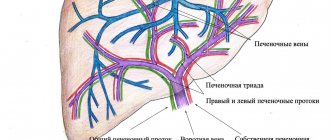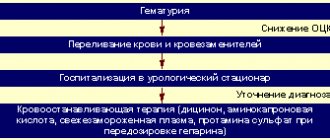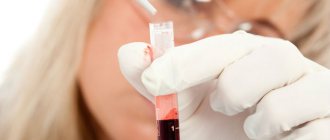Nosebleeds (scientific name: epistaxis) is the abnormal flow of blood from the nasal vessels through the nostrils or down the pharynx. Usually this condition does not pose a serious threat. But if it happens often, it requires medical consultation, since it can be a symptom of serious illnesses.
In case of frequent problems with nosebleeds, do not delay treatment - call +7 (499) 653-58-25 or make an appointment on our website online. We have experienced doctors who will definitely help you!
Causes
Possible causes of bleeding:
- mechanical trauma to the nasal mucosa;
- deviation of the nasal septum to one or both sides from the midline;
- thinning of the nasal mucosa;
- inflammatory processes of various origins;
- benign or malignant formations inside the nasopharynx;
- hyperthermia during an infectious process or after overheating in the sun;
- exacerbation of hypertension;
- hormonal disorders;
- abuse of vasoconstrictor drops;
- long-term use of NSAIDs;
- overdose of anticoagulants, leading to problems with blood clotting;
- dilation of blood vessels when drinking alcohol;
- diseases of the circulatory system, heart or blood vessels;
- changes in barometric pressure (divers, climbers, during air travel).
Expectant mothers, more often in the third trimester, experience mild nasal bleeding due to the growth of the capillary network in the nasal cavity due to increased production of estrogen.
Preventive measures
Due to the increased dryness of the air, nosebleeds may also occur. For example, when the heating is turned on, the air in apartments and offices becomes much drier than at other times. A properly selected humidifier, placing damp towels on radiators, spraying the room with a spray bottle, frequent ventilation or indoor plants will help improve the situation. When the nasal mucosa dries out, crusts may form on it. To avoid this phenomenon, try periodically instilling 2-3 drops of rosehip oil or sea buckthorn oil. If bleeding in your case is associated with increased fragility of blood vessels, consult your doctor. Rutin and ascorbic acid strengthen blood vessels well. If blood clotting is reduced, it is recommended to drink tea from herbs (yarrow, plantain, nettle, knotweed, fruits and leaves of sea buckthorn). A 5–10% solution of calcium chloride helps reduce the permeability of vessel walls. It must be taken after meals, 2-3 times a day with a teaspoon. Blood can clot poorly even with a lack of vitamin K. Use lettuce, spinach, bananas, all types of cabbage, avocado, soy, wheat bran, eggs, meat, olive oil and dairy products. And you will help your body cope with this problem.
Types of nosebleeds
There are 2 types of nosebleeds and are classified by location:
- Anterior - blood flows from one or both nostrils in the form of drops or streams. Most often, this deviation from the norm affects the capillaries. This epistaxis is not dangerous and usually stops without outside help.
- Posterior section - blood does not appear from the nasal canals, but flows into the pharynx and enters the digestive tract. It is provoked by damage to large blood vessels localized in the lower parts of the nose. They usually require medical attention to resolve.
Posterior bleeding is a rarer occurrence than anterior bleeding, but is more life-threatening. Bleeding from the nasal cavity is also divided according to frequency into: one-time, recurrent or habitual.
Symptoms
The main symptom of epistaxis is blood coming out of the nostrils or entering the oral cavity from the upper part of the pharynx. In more severe cases, accompanying symptoms are revealed:
- weakness, nausea, disturbance of spatial orientation;
- feeling of fullness in the ears;
- headache;
- tachycardia;
- hypotension;
- pallor of the skin.
If blood ends up in the stomach, vomiting with blood clots occurs, and the stool becomes dark in color.
First aid for nosebleeds
To stop bleeding, first aid includes the following:
- The victim is seated on a chair or armchair so that his body leans slightly forward.
- A cotton wool or gauze swab is generously moistened with water or 3% peroxide and placed in the nostril from which blood is flowing.
- Before removing the tampon, it is re-moistened by applying liquid through a pipette, and then carefully removed.
If there is no injury to the nasal septum or a fracture of the facial bones, and there is nothing at hand to make a tampon, then simply press the wings of the nose against the septum with the thumb and forefinger. The time of such fixation is 3-5 minutes. The victim should breathe through his mouth with his head slightly tilted forward.
It is also advisable to apply something cold to the bridge of the nose or the back of the head for a quarter of an hour. To make sure that blood does not flow into the throat, simply spit and evaluate the condition of the saliva. If there are no streaks of blood in it, then there is no reason to worry.
Nosebleeds: causes
Nosebleeds, or epistaxis (epistaxis - from the Greek “drop by drop”) is one of the most common reasons for patients seeking emergency otorhinolaryngological care, as well as the most common type of bleeding in medical practice. Most people have had a nosebleed at least once in their lives.
Where does it come from and what does it threaten?
And then another patient at the appointment joyfully says that her “nose was bleeding again”:
- This is very good, doctor? This means that I am not at risk of a stroke, right? All unnecessary blood has flowed out!
But scientists have a different opinion. There is absolutely nothing “good” about nosebleeds, especially in people suffering from hypertension with frequent surges in blood pressure.
The fact is that with arterial hypertension, in addition to a simple mechanical rupture of blood vessels (much like cracks and tears form in an old watering hose when pinched), the properties of the blood change in patients, microcirculation disorders and damage to the inner wall of blood vessels develop. As a result, blood clots form in the nasal mucosa. Or - in another way - localized intravascular coagulation with necrosis of the vascular wall. It is because of this that patients experience persistent bleeding.
It must be remembered that the cause of bleeding in elderly people can be acquired platelet dysfunction (for example, after using aspirin, other non-steroidal anti-inflammatory drugs, clopidogrel, dipyridamole) and - especially! - in case of accidental overdose of these drugs. Carefully record what medications you were taking before the bleeding and tell your doctor about them.
There are also nosebleeds due to blood diseases, injuries, benign and malignant neoplasms of the nasal cavity. They are especially dangerous because they can quickly lead to significant blood loss or even hemorrhagic shock. That’s why it’s so important to see an otolaryngologist even if you only have a single episode of “a few drops of blood from the nose”! And an elderly family member must be sent to a therapist for tests and selection of the necessary medications.
How to help?
First of all, take a semi-sitting position. In this case, the wing of the nose is pressed against the septum with your hand for 5–20 minutes. To enhance the effect, you can put a cold compress or ice on the affected side of the nose. Tilt of the head forward will prevent blood from flowing into the throat and, as a result, nausea and airway obstruction. If all of the above does not help, then a small cotton or gauze swab soaked in a solution of 3% hydrogen peroxide can be placed in the anterior sections of the nasal cavity.
Sometimes drugs are used that cause a narrowing of the blood vessels in the nasal mucosa. Such products are called nasal decongestants (literal translation - “eliminating hyperemia and congestion in the nose”, from the English congestion - blockage, stagnation, hyperemia). These are well-known nasal drops that relieve nasal congestion (oxymetazoline, xylometazoline, etc.). Which of them is best to use for recurrent nosebleeds is best for you - your doctor will tell you.
It is imperative to measure blood pressure and pulse every 10–15 minutes. If this procedure does not stop the bleeding within an hour or the bleeding is very severe (500–700 ml leaked), then the patient must be taken to a medical institution where techniques have been developed to help such patients.
How to treat nosebleeds?
Previously, for persistent nosebleeds, it was recommended to inject sclerosing substances under the bleeding mucous membrane or “cauterize” the vessels (cauterize the bleeding area of the mucous membrane with silver nitrate). Their undesirable effect is the ability to cause dry tissue necrosis, dry nose and the accumulation of crusts, which provoke recurrent bleeding. These methods are not currently recommended.
Treatment of bleeding currently includes correction of local intravascular coagulation. Quite a few medications are used for this, so the decision on whether to take them should be left to the attending physician. For your part, you can take care of increasing the air humidity in your home using humidifiers, and also pay attention to identifying and treating possible allergic diseases.
Valentina Saratovskaya
Photo istockphoto.com
Products by topic: (Sialor rhino), [product strict=”Nazivin”](Nazivin), (Nazol), (Noxprey), [product strict=”Afrin”](Afrin), (Vicks active sinex), (Nesopin) , [product strict=”Xylometazoline”](Xylometazoline), [product strict=”Xymelin”](Xymelin), [product strict=”Septanasal”](Septanasal), [product strict=”Otrivin”](Otrivin), [ product strict=”Rinomaris”](Rinomaris), [product strict=”Evkazolin”](Evkazolin), [product strict=”Galazolin”](Galazolin), [product strict=”Rinostop”](Rinostop), (Rinorus) , (Sanorin), [product strict=”Xilen”](Xilen), (Snoop), [product strict=”Nazik”](Nazik), (Rinonorm), (Asterisk)
When to see a doctor
An emergency medical team must be called in the following cases:
- the bleeding is massive and continues for too long;
- there is a suspicion of traumatic injury or entry of a foreign body;
- any diseases associated with impaired hemostasis have been diagnosed.
Age may also influence the difficulty of treatment. The older the patient, the more difficult it is to stop the bleeding and the more severe the consequences of blood loss.
Those who constantly have nosebleeds, when blood pressure rises or against the background of exacerbation of other systemic diseases also need medical advice. First of all, nasal bleeding is the profile of an otolaryngologist (ENT), but endocrinologists, hematologists and other specialists may also be interested in such a patient.
Diagnosis and treatment
The evaluation of epistaxis begins with a history and general physical examination using a nasal dilator and nasopharyngeal speculum.
To accurately identify the cause of the pathology, additional diagnostic methods are used:
- general clinical analysis of blood and urine;
- coagulogram;
- Ultrasound;
- ECG;
- X-ray, CT, MRI.
When bleeding from the nose, treatment begins with rapid relief of the pathological condition in order to prevent large blood loss. Then the cause that caused the epistaxis is eliminated and the possible consequences of acute blood loss are prevented.
If the bleeding cannot be stopped through the use of anterior or posterior tamponade and the use of hemostatic drugs, then resort to the following manipulations:
- radio wave method - the vessels are cauterized using the Surgitron apparatus, which emits high-frequency radio waves through electrodes, instantly evaporating moisture in the cells and promoting coagulation.
- electrocoagulation - vessels are cauterized under the influence of electric current;
- cryocoagulation - cauterization of the mucous membrane using liquid nitrogen;
- laser coagulation - the vessel is evaporated under the influence of high temperature of a narrowly directed laser beam;
If epistaxis is associated with a blood clotting disorder, the patient is prescribed hemostatic agents. If the reason lies in hypovitaminosis, then the patient is given a multivitamin complex.
Diagnostics
Diagnosis of nosebleeds is not difficult and is carried out on the basis of complaints and a general examination using pharyngoscopy or rhinoscopy.
To determine the cause of the pathology, doctors prescribe several additional research methods:
- general clinical blood and urine tests, coagulogram;
- ultrasound diagnostics of internal organs;
- electrocardiography;
- X-ray examination of the nasal sinuses and cranial cavity;
- computed tomography and magnetic resonance imaging of the sinuses.
Prevention
To avoid bleeding in adults or children, it is useful to adhere to the following rules:
- get rid of the habit of picking your nose;
- against the background of allergic or cold nasal congestion, do not blow your nose too often;
- when practicing dangerous sports (boxing, rugby), wear a protective helmet;
- use vasoconstrictors strictly according to instructions (no longer than 7 days);
- to reduce pressure in the nasal cavity, you should sneeze with your mouth open;
- If coagulants previously caused nasal bleeding, then the next time they are prescribed, be sure to inform your doctor about this.
It is also important not to rip off the crusts in the nose formed after bleeding until the mucous membrane recovers on its own. Otherwise, bleeding in this case may recur every day.
When working in production with polluted air, it is necessary to use personal protective equipment. To prevent bleeding, it is useful to undergo regular preventive examinations. With the next episode of epistaxis, it is important to see an otolaryngologist to find out the cause of the bleeding and receive recommendations for the future.








